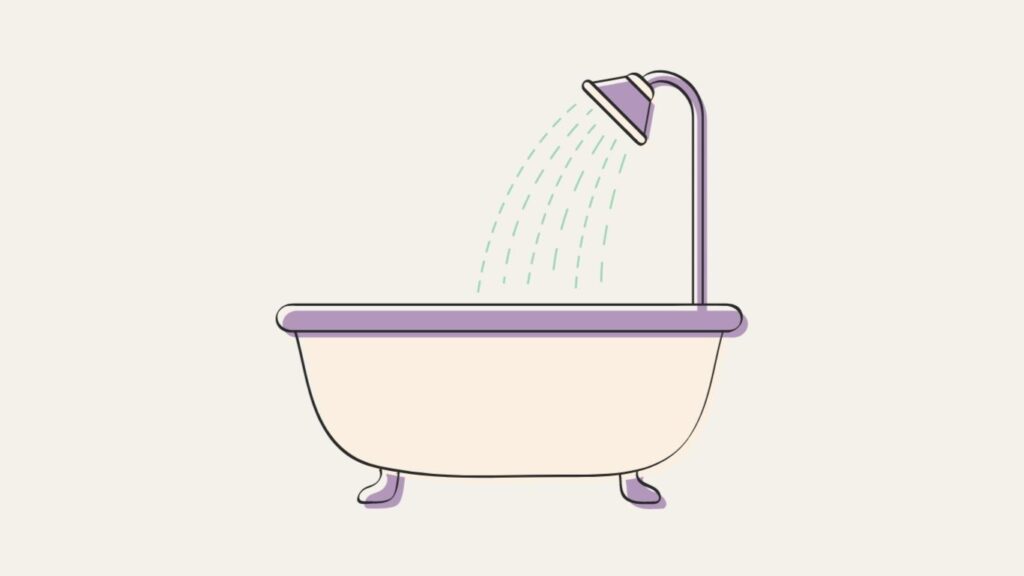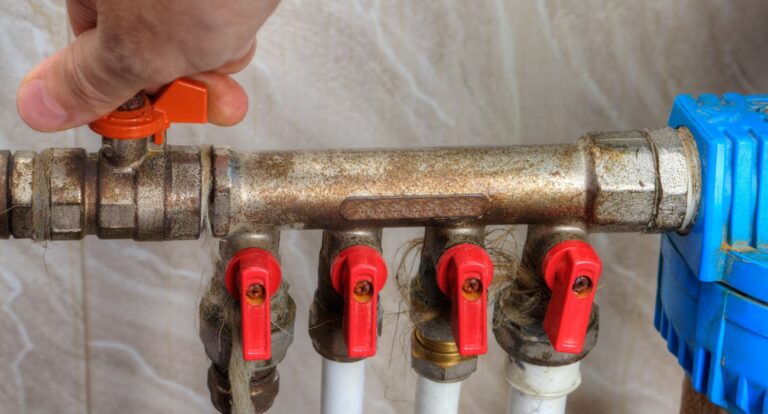How Much Is In An Average Bathtub? The Complete Analysis
If you’ve ever wondered, “How much is in an average bathtub?” then you’ve come to the right place. Understanding the volume of a bathtub isn’t merely trivia or random knowledge. There are a variety of reasons why this information is beneficial.
It can influence decisions related to purchasing a new tub, planning a bathroom renovation, or even calculating water consumption for environmental or cost considerations. Moreover, it can be valuable when administering a therapeutic bath, where medication or treatment dosage may depend on water volume.
How Much Is In An Average Bathtub?
A typical bathtub holds 80 gallons (302 liters) of water. But that’s just a general range. The actual amount can vary depending on several factors such as the tub’s design, material, and overall dimensions.
Here’s a brief look at some of the most common types of bathtubs and their average water capacities:
| Type of Bathtub | Average Water Capacity (Gallons) |
|---|---|
| Typical Standard Bathtub | 80 |
| Whirlpool Bathtub | 40 – 60 |
| Soaking Bathtub | 60 – 80 |
| Walk-in Bathtub | 40 – 60 |
| Clawfoot Bathtub | 40 – 60 |
Please note, the figures above represent the amount of water required to fill the tub to its capacity. However, when you step into the tub, the water level will rise due to displacement, which is why it’s not recommended to fill the tub to its full capacity when bathing.
Factors Affecting Bathtub Volume

Bathtub Size
The size of a bathtub is determined by its length, width, and depth. Naturally, a larger tub will have a greater water capacity, while a smaller tub will hold less. This is a straightforward relationship of volume and space, as more room allows for more water.
The average length of a standard bathtub is about 5 feet (60 inches), but lengths can vary from as short as 4.5 feet (54 inches) to as long as 6 feet (72 inches) or more for larger, luxury tubs. Widths generally range from 2.5 to 3 feet (30 to 36 inches), with depths varying widely from about 14 to 20 inches or more.
Keep in mind that the bathtub’s dimensions are not the only determining factor for water capacity. The interior design, including the slope of the tub, can also affect how much water the tub can hold.
Bathtub Shape
While many bathtubs have a standard rectangular shape, there are numerous designs on the market, from circular and oval to corner and freestanding tubs. The shape of a bathtub can significantly impact its water capacity.
For instance, a bathtub with a rectangular base will generally hold more water than a circular or oval-shaped one, assuming all other dimensions are equal. This is due to the geometric properties of these shapes – a rectangle tends to maximize the use of space more efficiently than an oval or circle.
However, different shapes offer different aesthetic and functional benefits. While rectangular tubs might offer more water capacity, oval or circular tubs may provide more comfort or match better with certain bathroom designs.
Bather Displacement
When a person enters a bathtub, they displace a certain volume of water. This is a manifestation of Archimedes’ Principle, a law of physics that states that the upward buoyant force exerted on a body immersed in a fluid is equal to the weight of the fluid that the body displaces.
In practical terms, this means that the water level in the tub will rise when you get in. The typical displacement for an average-sized adult is approximately 5-10 gallons (18-38 liters). However, this can vary depending on the person’s size and how much of their body is immersed in the water.
This phenomenon of bather displacement is why it’s not recommended to fill the tub to its full capacity when bathing. Leaving room for displacement ensures that the water won’t overflow when you get in.
Overflow Drain
Most bathtubs come equipped with an overflow drain, a feature designed to prevent water from spilling over the edges of the tub if left unattended. This drain is usually a circular or oval hole located a few inches below the top rim of the tub.
The placement of the overflow drain significantly influences the maximum capacity of water your tub can hold, regardless of the tub’s dimensions. This is because any water that rises above the level of the overflow drain will simply drain away.
While the overflow drain is a safety feature, its placement and design can vary among bathtubs, which can in turn affect your tub’s maximum water capacity. In some bathtubs, the overflow drain may be placed lower, limiting the maximum fill level of the tub. In others, it might be higher, allowing for a deeper bath.
Why Does Bathtub Volume Matter?
Having an accurate understanding of how much water your bathtub can hold can be beneficial for several reasons:
- Water Conservation: Knowing the water capacity of your tub can help in making conscious decisions about water usage. By being aware, you can aim to reduce your water consumption, thereby aiding in environmental conservation and lowering your utility bills.
- Bath Products Usage: The amount of bath products (bath oils, salts, bubbles) you use will depend on the volume of water in the tub.
- Heating Costs: More water means more energy to heat. Understanding how much water your tub holds can help manage your energy consumption.
- Safety: Overfilling a tub can lead to spills and potential accidents. Knowing your tub’s capacity can help prevent these occurrences.
Key Takeaways
- An average bathtub holds between 60 to 80 gallons of water.
- The actual amount varies significantly depending on the tub’s design, dimensions, and the presence of an overflow drain.
- Knowing your tub’s capacity is crucial for water conservation, optimal use of bath products, managing heating costs, and ensuring safety.
Frequently Asked Questions
What is the capacity of a standard bathtub?
A standard bathtub typically holds between 60 to 80 gallons of water.
How much water does a person displace in a bathtub?
When a person enters a bathtub, they usually displace around 5-10 gallons of water.
Why is knowing my bathtub’s capacity important?
Knowing your bathtub’s capacity is important for effective water conservation, optimal usage of bath products, managing heating costs, and ensuring safety.
Do different types of bathtubs hold different amounts of water?
Yes, different types of bathtubs, such as whirlpool, soaking, walk-in, and clawfoot tubs, all have different average water capacities.
How does the shape of a bathtub affect its water capacity?
Bathtub shape can significantly affect its water capacity. A tub with a rectangular base generally holds more water than one with a circular or oval-shaped base, assuming all other dimensions are equal.
Remember, knowing the capacity of your bathtub isn’t just trivia—it’s valuable information for various practical applications. And while averages and estimates are useful, for the most accurate information, consider measuring your specific tub or consulting its manufacturer’s specifications.
Related articles:
- How Much Does It Cost to Remove and Install a Bathtub? Dive Into Savings
- Is It Cheaper To Have A Bathtub Or A Shower? Bathtub vs Shower – Which is Cheaper?

Amanda has been designing and installing bathtubs for over 15 years. She first got interested in the bathtub industry while working as an interior designer right after college. During her years as a designer, Amanda was frustrated by the lack of high-quality, unique bathtub options for her clients. This passion led her to start her own bathtub website in 2009.







